Once you’ve made the decision to buy a motorhome, you are one step closer to owning one. For some, the decision process might be no more than one trip to a dealer, looking at models, and signing on the dotted line (or several dotted lines).
But for most of us, the decision to own a RV can be complicated and overwhelming. Choices abound: brands, floor plans, size, cost, you name it. We bought a different RV/camper every two years before we hit our sweet spot with Lucky Us, our 2015.5 Leisure Unity Murphy Bed. Now that we have the unit of our dreams, we have no need to look further.
Finding The One
But how did we get here? Finances drive many decisions, especially when it comes to travel. Bill and I each began taking our vacations in tents many decades ago, and for many years it sufficed.
Then something seemed to quietly creep up on us – the need for sleeping above the ground, and a desire for a moveable home with less work involved (oh yeah – age, too). We wanted something a bit easier, with more of the creature comforts. Bill moved up to a van he customized himself, and then to a high-top van.
We made our first move up together with a pop-up camper. It was very affordable, and we were no longer sleeping on the ground; now we were towing and setting up our home, raising the roof and pulling out the beds. But setting it up became tiresome, and we were taking two vehicles – one towing the camper, the other towing our boat – when we wanted to go fishing in our home state of Michigan.
We wanted to get away from towing, so we bought a truck camper. Now we had a bathroom, refrigerator, and stove, along with a bed. We could leave the camper on-site and drive around. We could tow the boat, too.
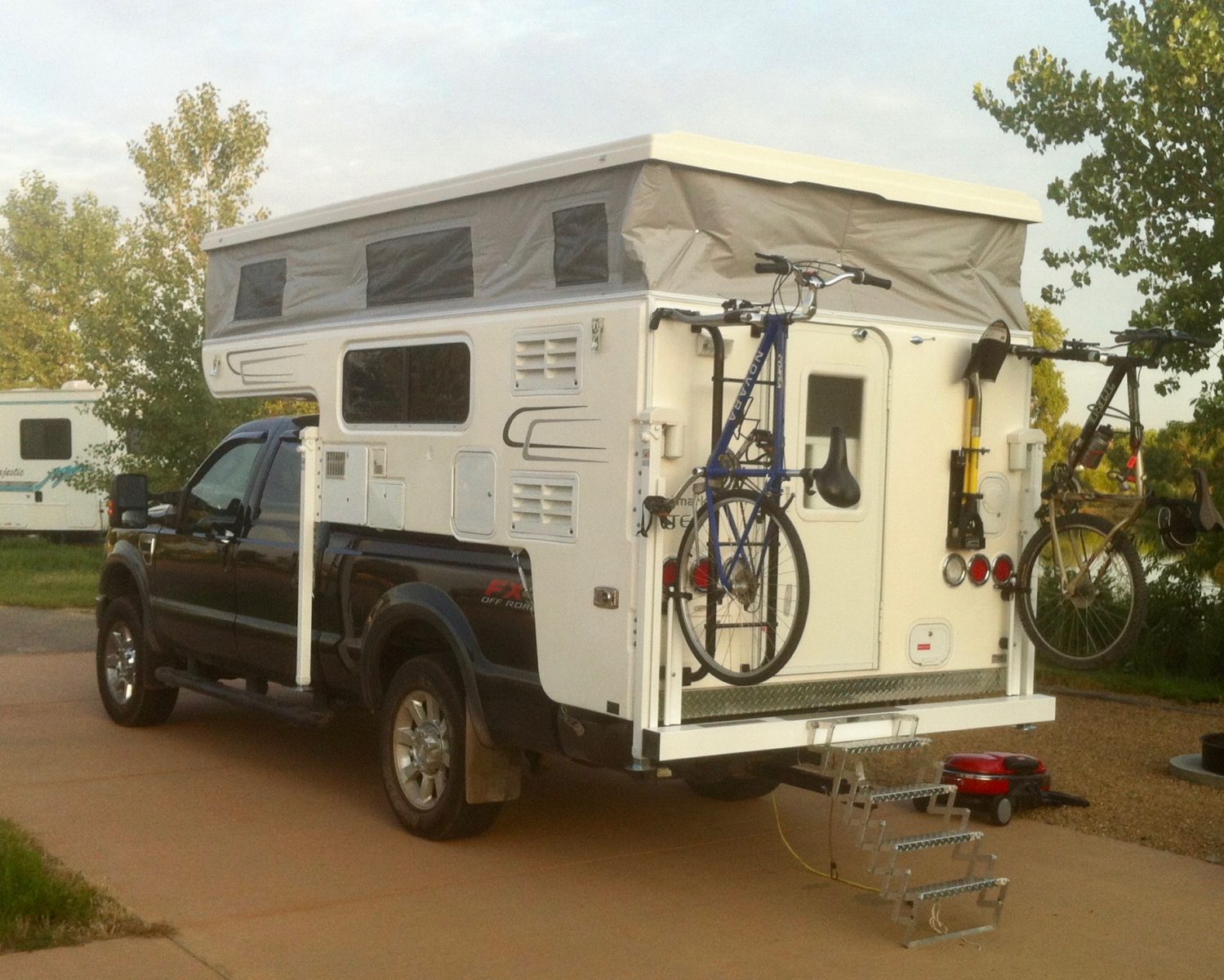
Then Bill spotted a Class B RV for sale. We went back to look at it several times. Now, we wanted something better. But what form would “better” take? A year or two passed, with Bill reminding me of that beautiful RV we saw – and lusted for – in that parking lot. Could something like that become part of our travels?
First, let’s look at lifestyle. Bill is an avid walleye angler, and owns a 20-foot walleye boat. We live in Michigan, near Detroit, the walleye capital of the world. Our RV must be able to tow – and launch – his 2,800-pound boat, which includes a 250-horsepower outboard, and other gear.
Towing a boat meant we needed torque, and among the choices in a small RV would be a diesel engine-powered vehicle with dually wheels on the back. On non-fishing trips, we’d have a rack for our bicycles. We focused our search on 22-foot Sprinters, and bought one just two years old with less than 10,000 miles. It was outfitted with a rear dinette that converted to a bed with the touch of a button. With a bathroom, bigger refrigerator, stove and more, we thought we were all set. It seemed perfect.
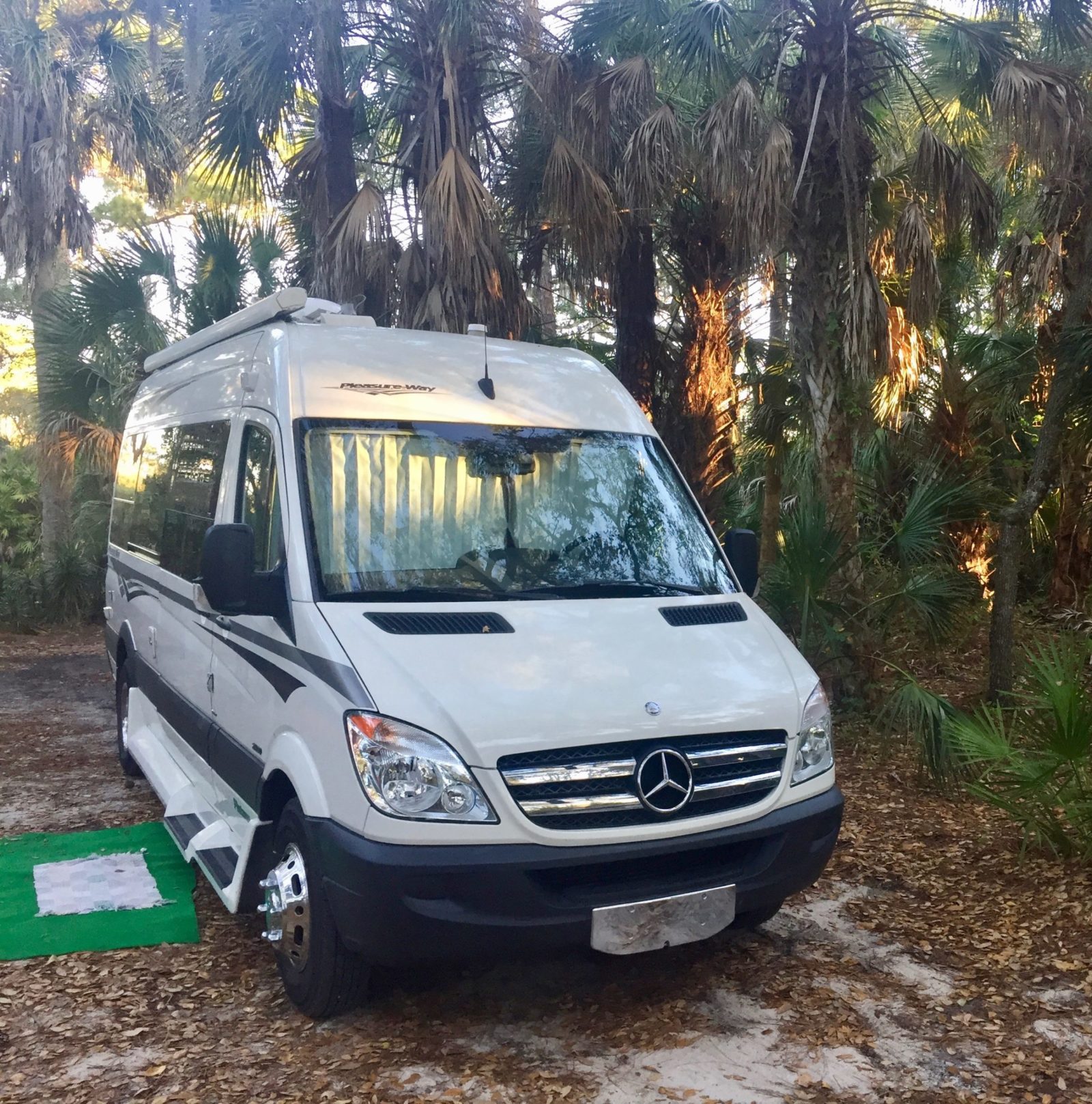
We took our new-to-us RV from Michigan to California and back. We took it from Michigan to Nova Scotia and the Atlantic Coast. And we took it on our annual winter trip to Florida. We even traveled with our two cats on a few trips.
In the course of the two years that we owned it, something happened again. Every night, Bill would take down the dinette table, put it between the seats, rearrange the cushions to lie flat, and then push the button to bring the back of the couch down flat. Then I would make the bed.
In the morning, we’d pull off the sheets and blanket, and bring the back of the couch up. I didn’t mind the routine, but Bill wanted something easier. No more daily bed making. No more figuring out who wanted to pass through the aisle from the dinette to the front of the RV.
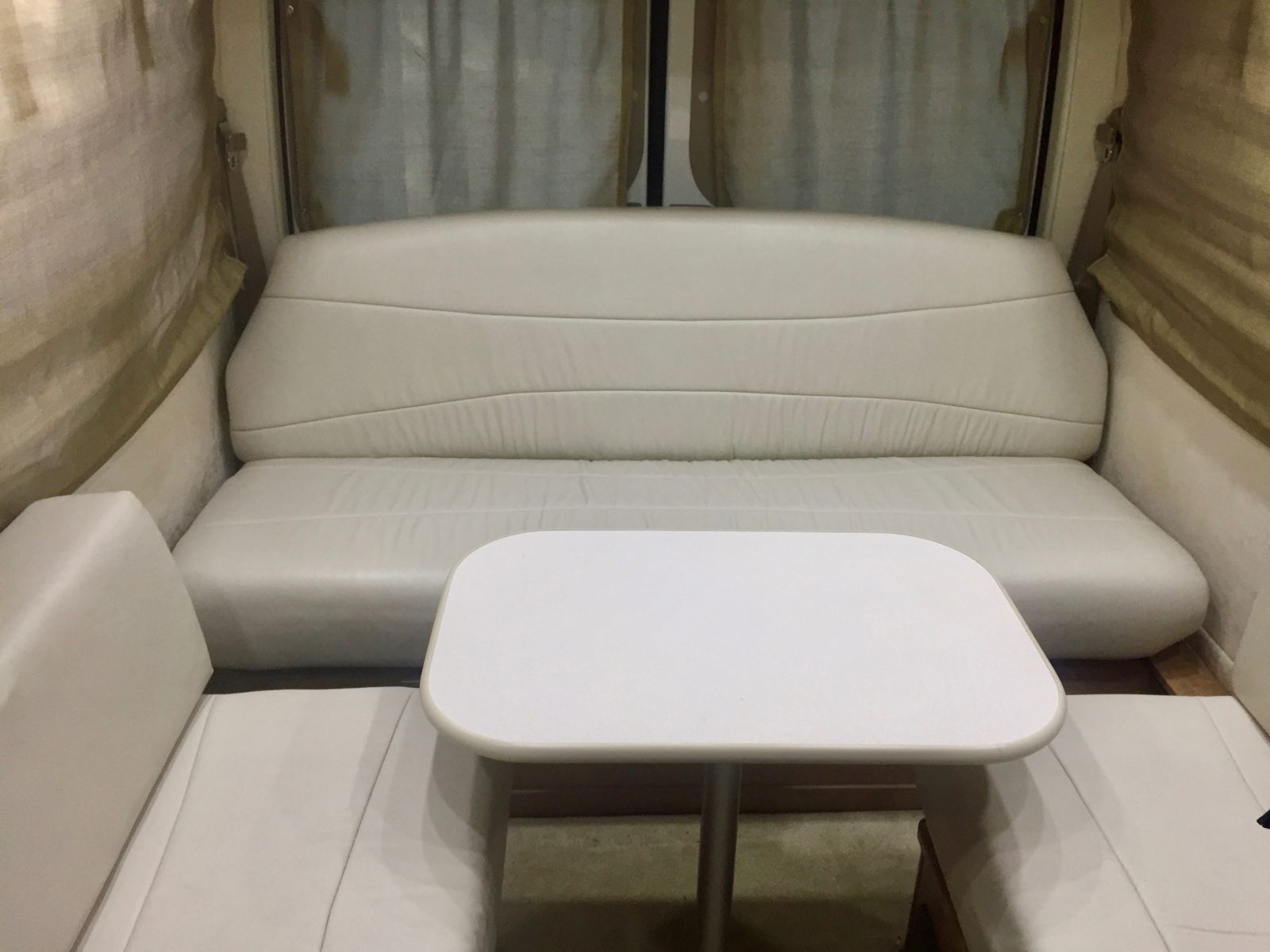
Our outside storage was very limited. We stuffed our camp chairs and more on the floor in front of the couch, bungeed them to the bike rack, or placed them under the boat cover. The little bit of outside access was reachable only through the back two doors, and our bike rack was always in the way.
There was a model out there for us, he insisted, that would be just a little bit bigger and better. We wouldn’t have to dance the pass-through waltz. We would have usable outside storage. We just had to find it.
He was infected with two-foot fever.
Two-foot fever, in RV-ese, is that desire for something just a little bit bigger (or smaller). And although I thought I was happy with our 22-foot Sprinter, two-foot fever had a hold on us. And so, to the next RV show we went, where we first spotted a Leisure Travel Van and a Leisure Unity MB, along with other Class B RVs with separate sleeping quarters and a dinette, or other floor plans. Now what?
We spent February and March in Florida in our 22-foot Sprinter, and Bill’s two-foot fever persisted. He spent an afternoon at the dealer where we bought our 22-footer. Now he wanted me to go, too. What about fuel expenses, license plates, mileage, insurance, and more? I was leery of the cost – how could we afford this?
Fortunately for us, this RV dealer had several brand new Leisure Travel Vans on display, and they were taking orders. The price tag of a brand new RV was staggering – maybe we could find a pre-owned coach, like we had with our 22-footer.
We quickly crossed off a few floor plans. The Corner Bed was an instant “no” for us. Bill had climbed over me to get out of bed in the truck camper and in the 22-footer. We wanted easy access out of bed.
The Island Bed and Twin Bed models had many features that we liked, but we felt too cramped in the dining/kitchen area. We go to bed and get up about the same time each night, and don’t need separate sleeping and dining areas. Scooting around each other in our current RV played heavily in our decision.
The Leisure Unity Murphy Bed offered everything that we wanted. We would have a much more open floor plan. No more putting a bed together every night, and no more taking the sheets off every morning. Even with the slide in, we would be able to easily walk around while stopped on the road.
The Unity MB floor plan would be like our own little studio apartment. The spacious bathroom offered room for our cat litter boxes, and still left space to move around. We would each have two drawers for clothes – one each under the bed and below the closet. It had plenty of outdoor storage. The Murphy Bed model seemed perfect for us.
We prefer buying “gently used” RVs for the savings. Unfortunately, the dealer didn’t have any previously owned Unity Murphy Beds on the lot. He also told us that, if and when they do get a used LTV of any floor plan, they are sold in a day or two. However, he did have another model by a major U.S. builder headquartered in Iowa, with a separate bedroom and dinette, available and equal in price with our 22-footer. We could go bigger. But would it be better?
The next day, our sales representative called. A 2015.5 Leisure Unity Murphy Bed with 9,000 miles just came in on consignment. Would we want to see it?
Decision Time
We took a look at the 2015.5 Leisure Murphy Bed the next morning and fell in love. It had everything we wanted, plus low mileage. But could we afford this, when right next to it was another make and model that would be bigger than what we had, and would keep us within our current RV payment? Could we afford to step up once again?
Back and forth we walked from one RV to the other, sitting in each one, comparing space and how easily we could move around, and comparing quality (the LTV easily won on that issue). We even took the “other” for a test-drive. In the end, it boiled down to this: Save money, or get the RV of our dreams. We weighed the costs that night. Then I uttered the crucial factor in making our decision, and it made it easy.
“If not now, when, Bill? You are turning 70 this year. Will we get the RV of our dreams, or will we keep lusting for this rig every time we watch one drive by. If not now, when?”
Our choice was made. We never looked back, and never regretted our decision. When it came time to name our Unity MB, it didn’t take long: Lucky Us.
Choosing Your Floor Plan
Sleeping Habits
If you travel with someone, how compatible are your sleep patterns? We have talked with other LTV owners and been surprised by how many people want/need separate sleeping areas, because one person typically goes to bed or gets up earlier than the other. Maybe another person gets up in the middle of the night to read, or wants a separate sleeping area for daytime naps – the list goes on.
This was not an issue for us. We get up about the same time, and if I want to take a nap while we are at a campground, I can just lie down on the couch, which serves as a day bed. If Bill wants to work on his computer while I’m resting, he just turns the passenger seat around or goes outside under the awning and plugs in to the exterior outlet.
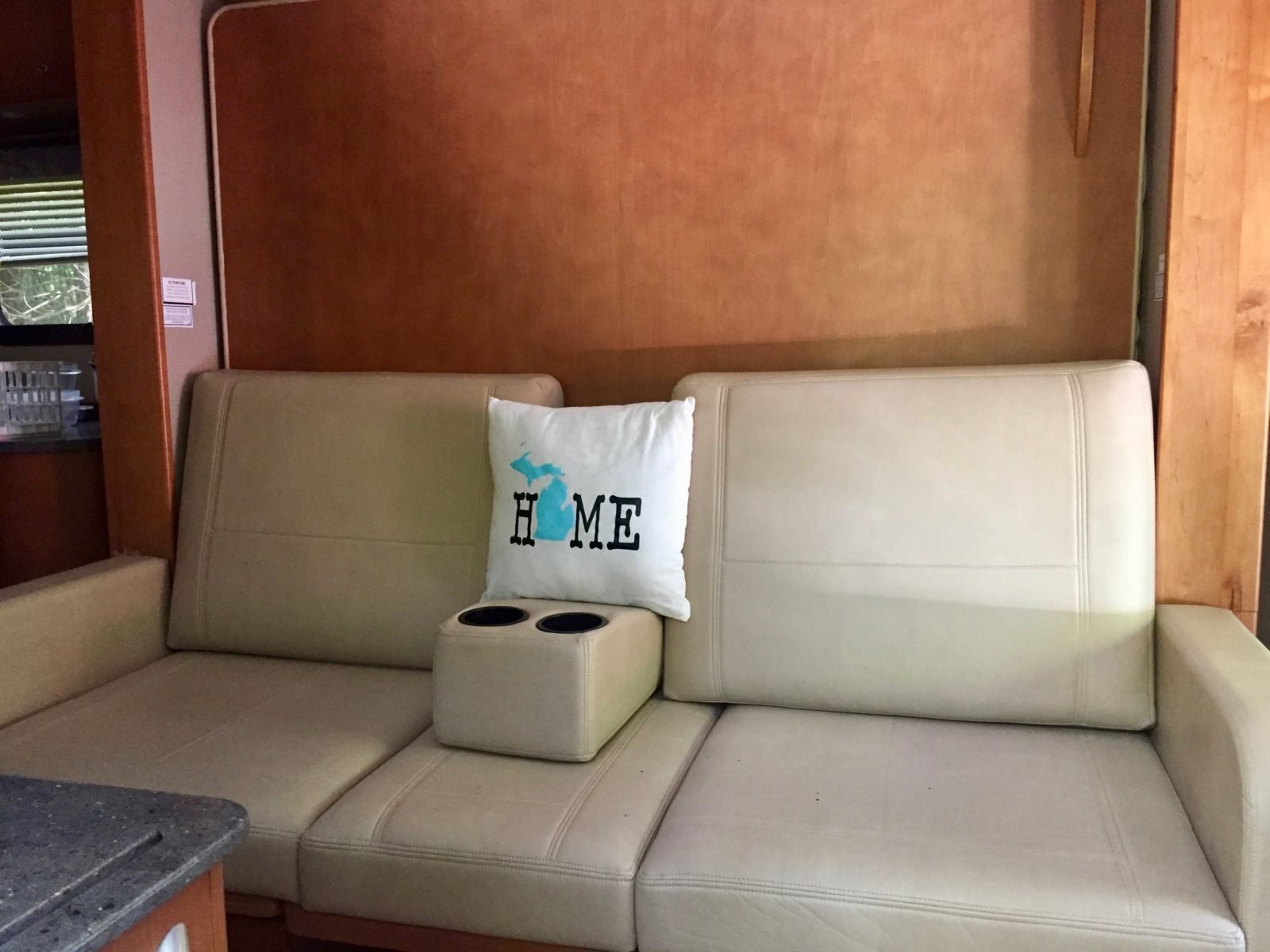
Outside Storage
Although we were very happy to finally have outside storage, we quickly discovered that our Webber tabletop grill was just a little too wide to fit in the rear passenger side storage unit. We solved that by removing a knob. Bill is still toying with the idea of getting another grill that we saw at our Leisurely Great Lakers rally. So, check out those outdoor storage specs carefully and take a good look at what you want to fit into them. It may make a difference in your decision.
Parking
Like our 22-footer, our LTV, while nearly three feet longer, fits easily into parking spaces at markets and malls.
Towing Capacity
Will you tow a vehicle, boat, or storage trailer?
As I mentioned, Bill has a nearly 21-foot boat. With everything we bring on fishing trips in Michigan – the boat and trailer plus two outboards, two electric trolling motors, and assorted rods and tackle – we are towing nearly 4,000 pounds. We had to choose a diesel engine, but the current Ford Transit Wonder only tows 3,000 pounds. The Mercedes can tow 5,000, so decision made. Tow capacity might be a factor for you, too.

Bikes Or Other Stuff
Will you be attaching a scooter, motorcycle, or bicycles or e-bikes to your RV?
We bring two standard bikes, and chose a platform-style, hitch-mounted rack by Thule. We needed about a 16-inch hitch extension to the boat trailer tongue to clear the RV, and that was all we needed for our bike rack, too.
Other Costs
How much will your insurance and license plates cost?
A friend recently had an unpleasant surprise when they upgraded from a Class B to a Class A. Their Michigan license plate, which has to be renewed every year, costs much more than they expected.
Since license plates are based on the manufacturer’s suggested retail price in Michigan, we are enjoying a substantial savings with our Class B. And with insurance, the more expensive the vehicle, the more insurance can cost.
How about fuel mileage? Again, this might weigh on your decision. We average about 17.5 miles per gallon. When towing the boat, that drops by about two miles per gallon. There are other costs associated with owning a diesel, such as changing a fuel filter, but in the end, the extra mileage about evens it all out, in our opinion. And, not going to a dealer for every this and that service item makes a huge difference in maintenance costs.
Research on Social Media
Another way to research is to talk with other owners, and social media outlets offer many forums through which to contact others. We have gained many tips from the Leisure Travel Enthusiasts Facebook page.
For example, like us, some prefer not to rock-and-roll while entering and exiting store parking lots. Bill first saw the discussion on the Leisure Travel Vans Enthusiasts Facebook page about add-ons to help dampen the rolling motion as the unit climbed up or down the raised entrances. While there are a couple of options, we chose Sumo Springs and a Hellwig anti-sway bar, which fits around the rear drive axle and replaces a lighter factory unit. It helps immeasurably.
Solar or no solar?
This is another personal preference. You can purchase solar as a built-in factory option, or add yourselves. When our LTV was built, its first owners chose no solar, but we wanted it. We found the same panels the factory uses on eBay, bought the package which included the control panel, and had Holland Motor Homes, an authorized LTV dealer in Michigan, install it. We now have two 100-watt panels on the roof, putting out a maximum of about 11.5 amps per hour.
Does it work? Our unit has been in “storage” now for more than two months. We’ve turned off the “coach” power using the switch near the door. The batteries read 100 percent charged all the time.
When staying at one of our beautiful Michigan state forest campgrounds, there is no external power. We don’t need it. When it’s available, we plug in, so we can use other items inside. Would we buy solar again? You bet. Would we buy, say, 400 watts? You bet. Need we say more?
Take Your Time!
Whether you are ready to buy now, or are planning to buy a RV within the next several years, do your research. Spend HOURS, not minutes, comparing, and shoo the salesman away to think about your decision. Compare EVERYTHING. You’ll see a difference between LTV quality and that of other makers – there’s no comparison here. LTV wins, every time. And it’s OK if you trade in or sell one or two times to find the right fit. Because when you find the right LTV for you, you will search no more. Happy travels!


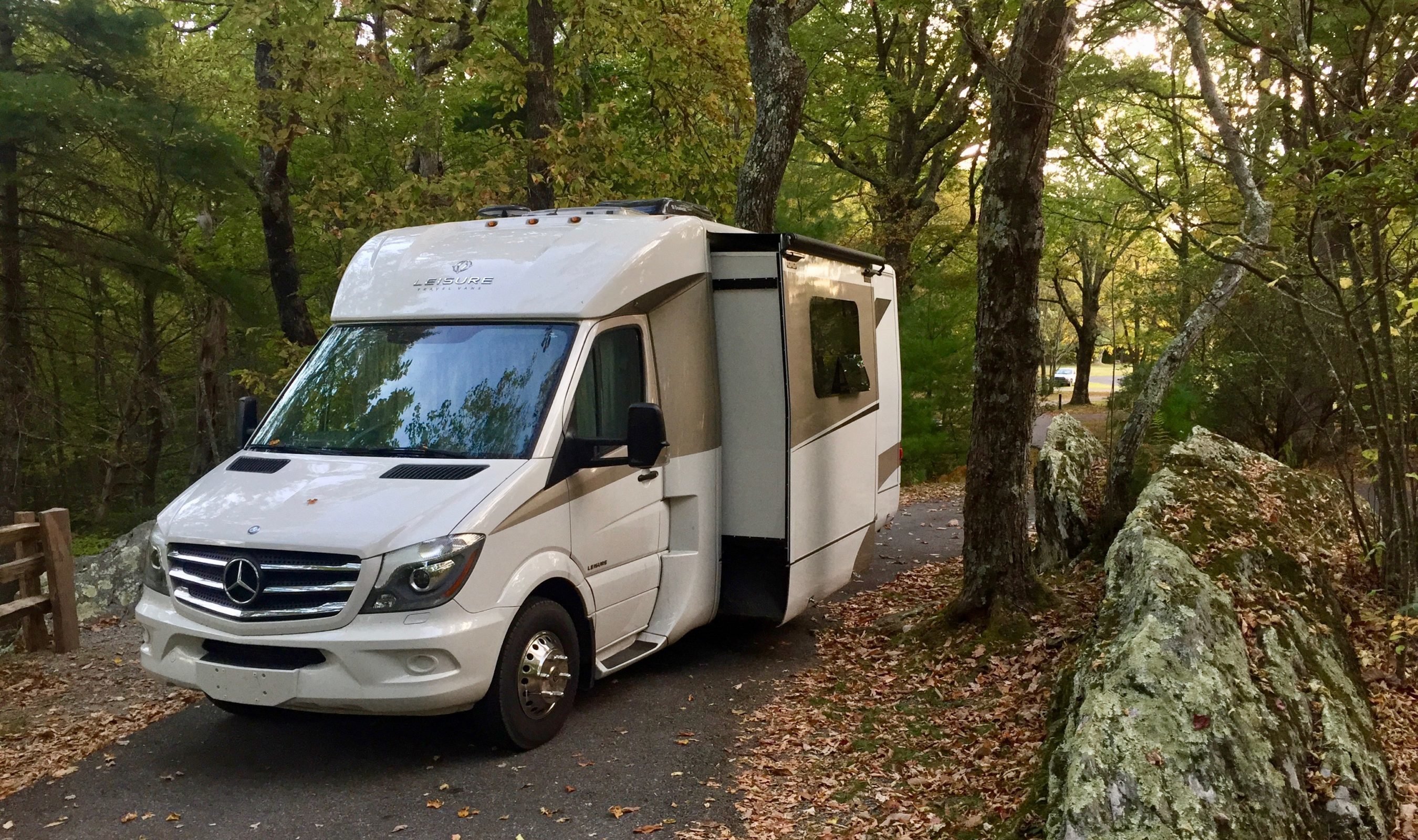
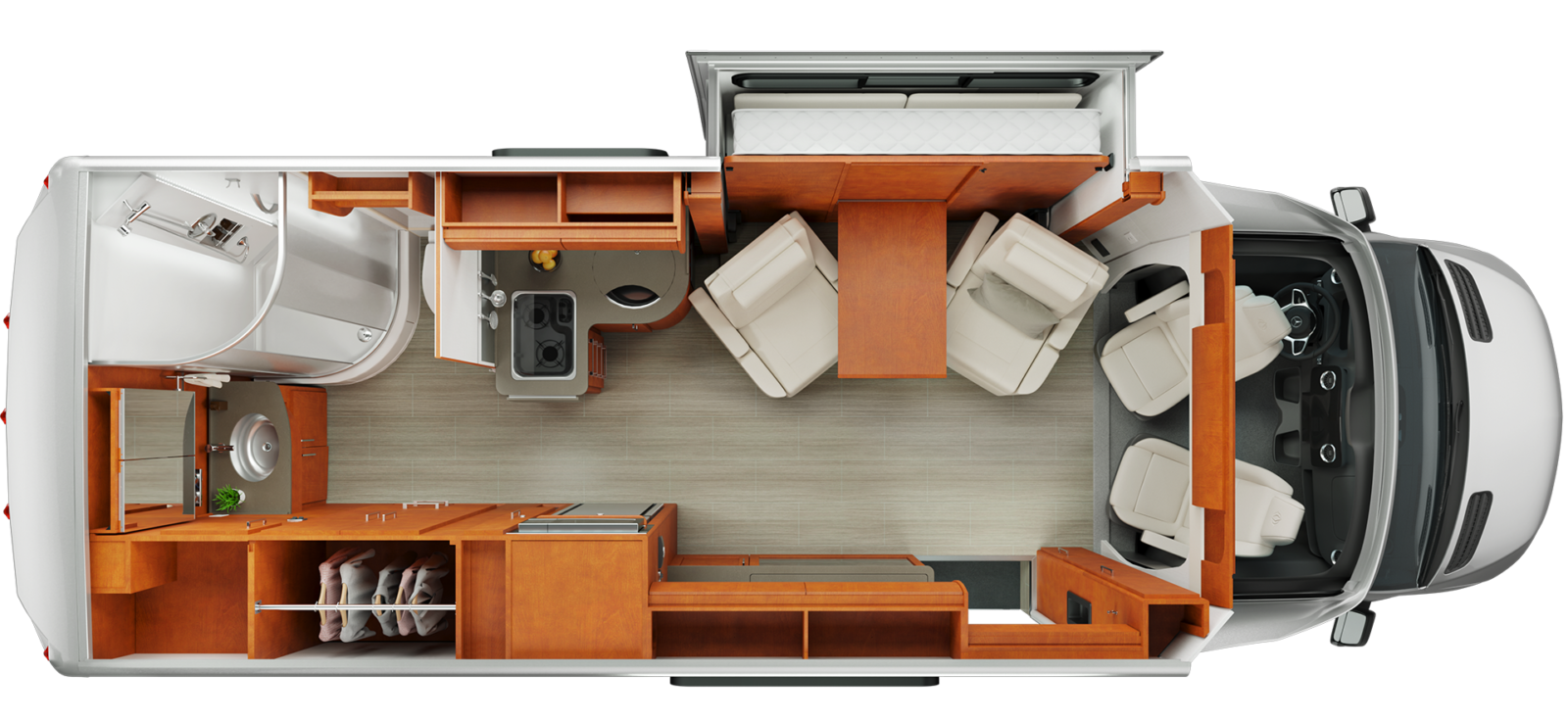
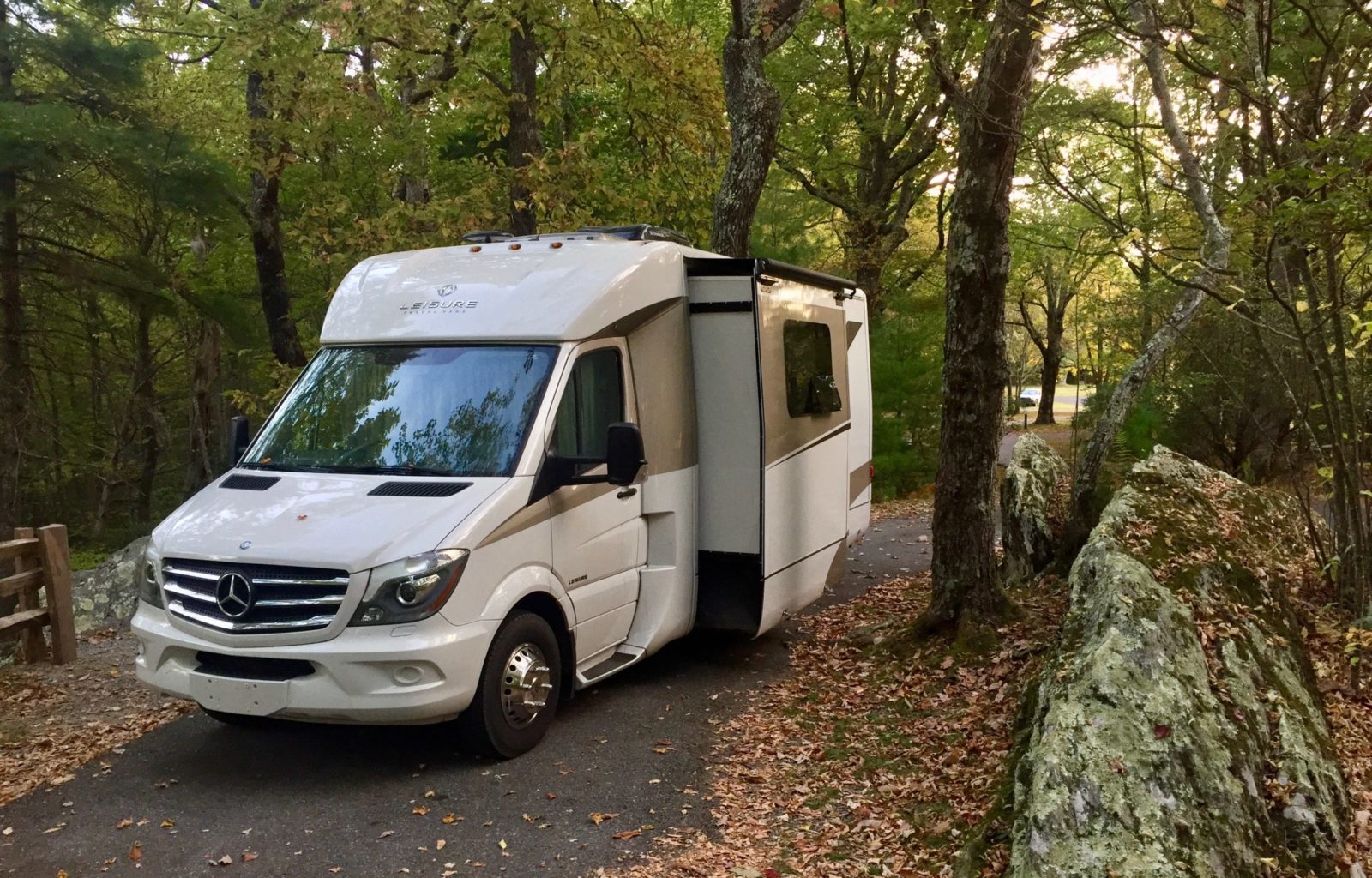
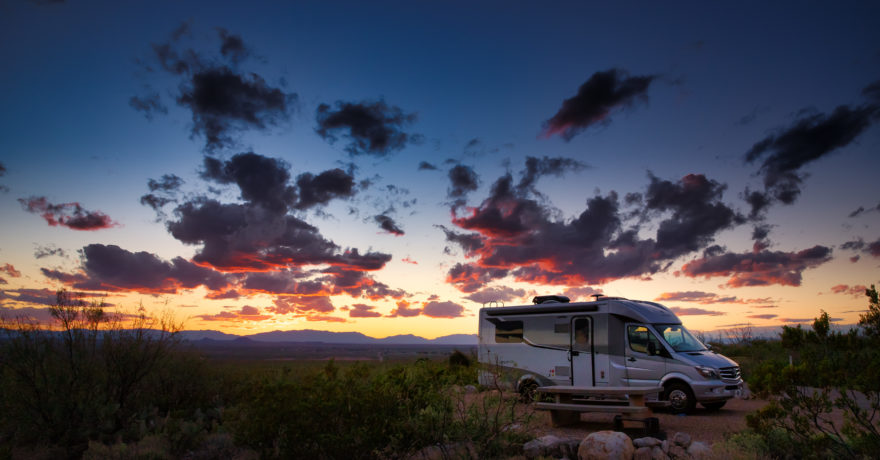
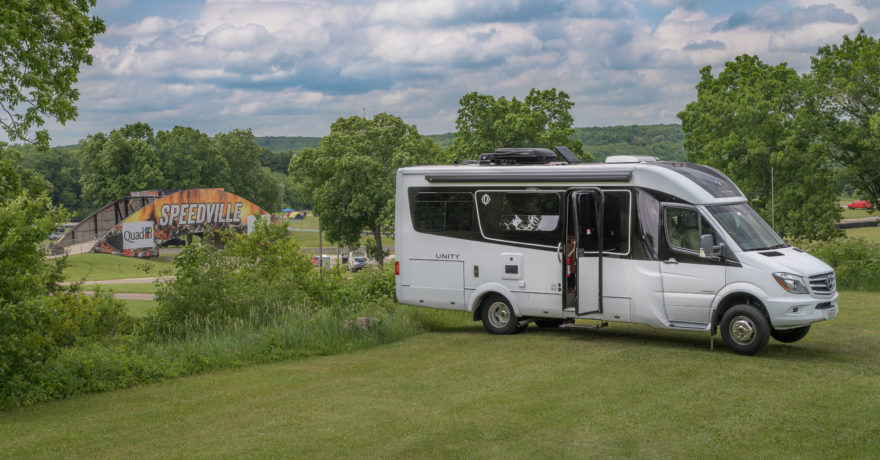
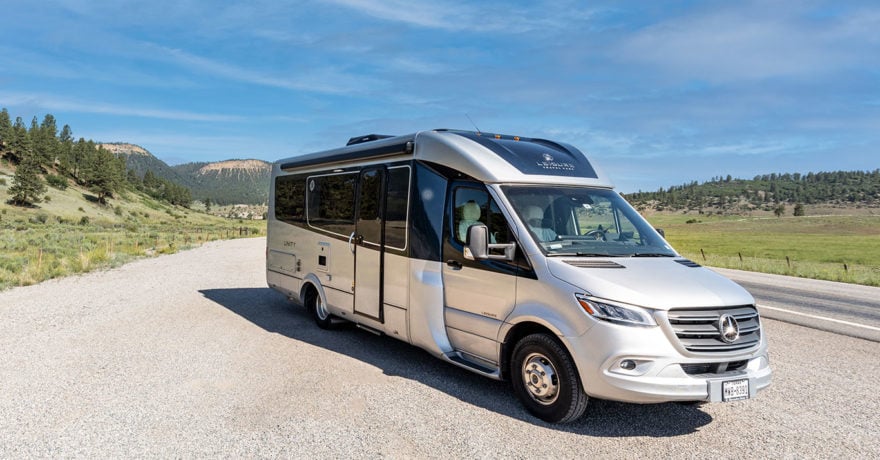
Comments